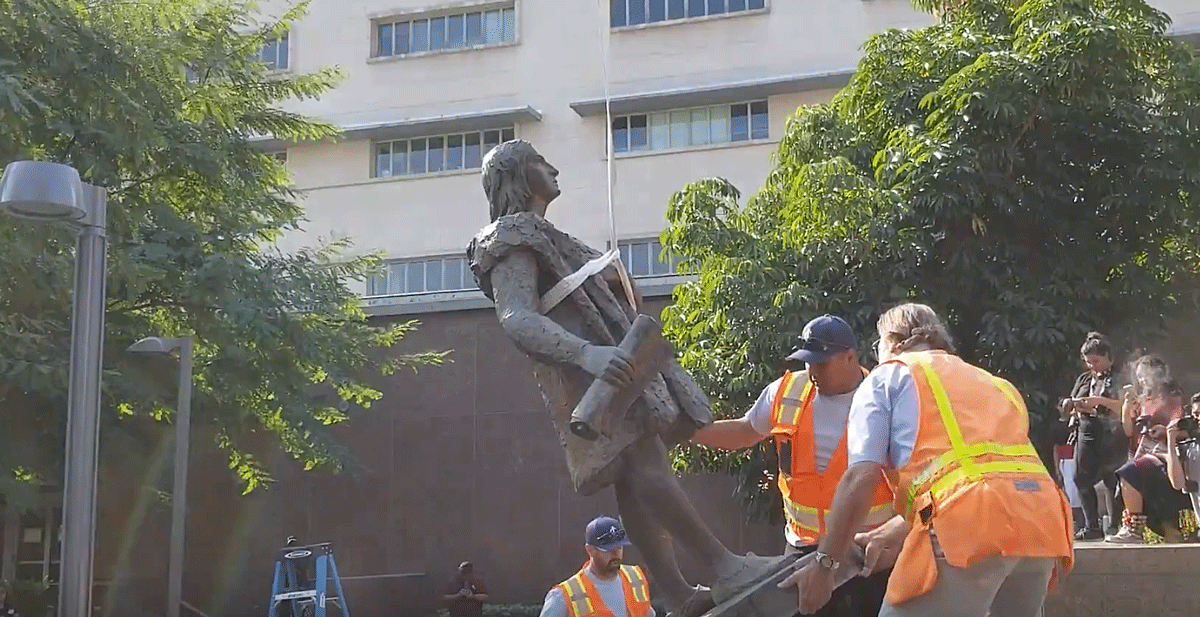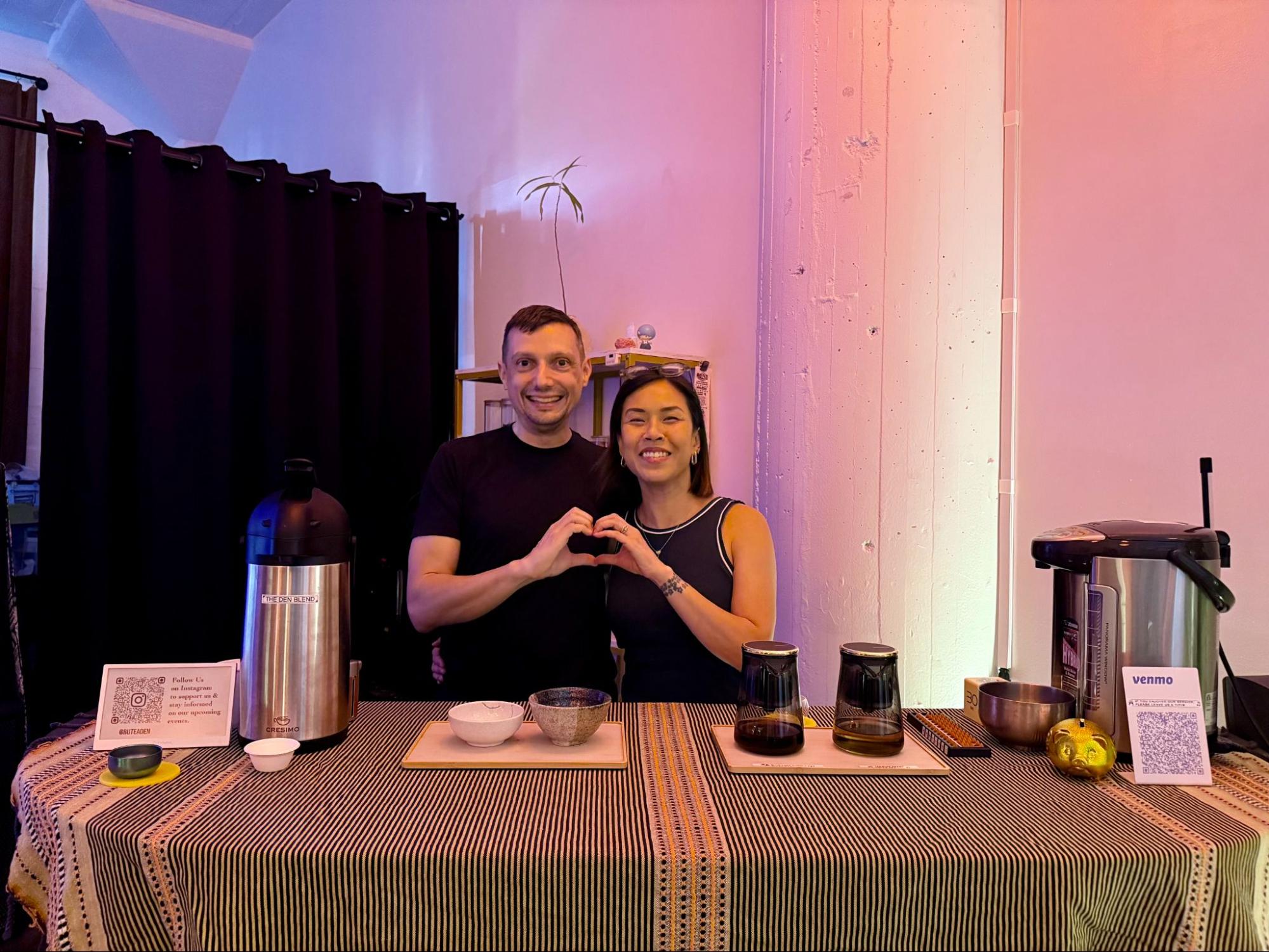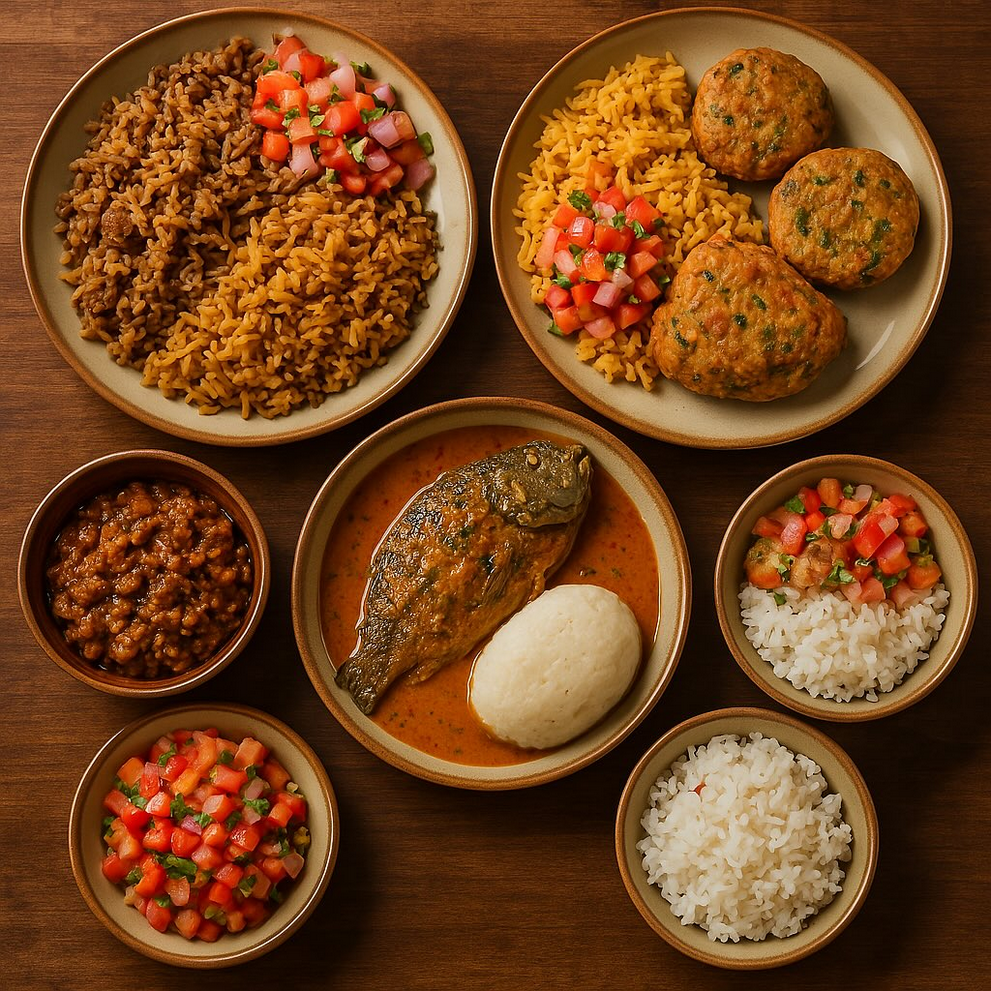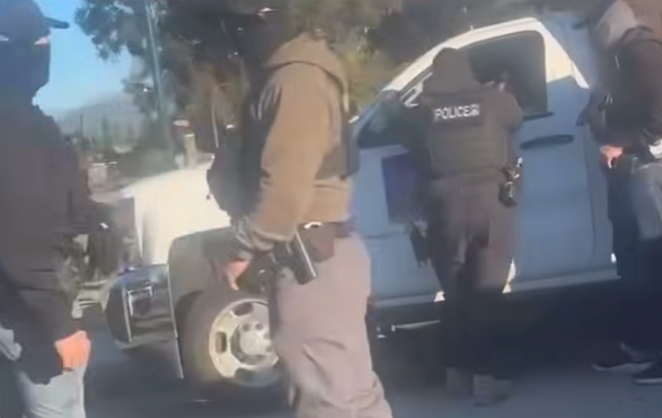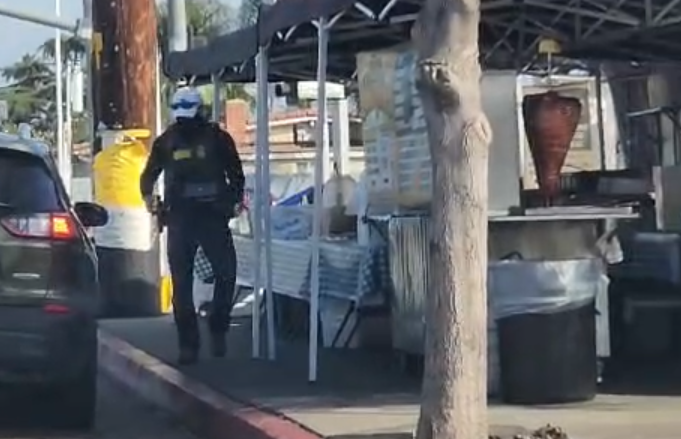[dropcap size=big]A[/dropcap] statue of explorer Christopher Columbus that stood for 45 years in downtown L.A.'s Grand Park was removed Saturday after a healing ceremony and speeches by Native Americans, including people belonging to the city’s local Tongva/Gabrielinos and Tataviam nations.
The removal of the Columbus statue from the park comes after both the L.A. City Council and County Board of Supervisors voted last year to replace the October Christopher Columbus holiday with Indigenous Peoples Day, which the city celebrated for the first time last month.
"We're going to erase this symbol 500 years of opression from this landscape." Crowd celebrates as city takes down #Columbus statue in Grand Park @LATACO @MitchOFarrell #downtown #LosAngeles pic.twitter.com/6rWPZj1o5h
— PhilipIglauer (@Philip_Iglauer) November 10, 2018
“That’s what happens when the first Native American ends up on Los Angeles City Council,” said City Councilman Mitch O’Farrell during the removal event. O'Farrell is a member of the Wyandotte Nation and led the City Council effort to make the holiday switch.
“Last month, we celebrated the first ever Indigenous Peoples Day in the city’s history,” he said. “It is a natural progression that on this day, this statue, this symbol of atrocity, oppression, and subjugation also falls.”
"We have to take down statues like this, because Columbus represents not an American dream but a nightmare for our peoples." Removing the #Columbus #columbusstatue at Grand Park in #LosAngeles @LATACO pic.twitter.com/o2ynhuw5ok
— PhilipIglauer (@Philip_Iglauer) November 10, 2018
The new holiday was officially first observed Oct. 8 in a daylong celebration in Grand Park, and included a sunrise ceremony, 5K run, parade of nations, Native American powwow, panel sessions, a fashion show, and live music with Redbone and the Black Eyed Peas.
The removal event attracted an emotional and cathartic response from the people in attendance with some shouting and clapping when workers from subcontractor Carnevale & Lohr Inc. began to lift the six-foot bronze statue onto the back of a flatbed truck. The removal event attracted about 200 people to Grand Park.

One man, who identified himself as Jonah “Inbetweenthebs,” crossed the yellow tape and climbed on top of the statue briefly in the morning before the ceremony began. Afterward, he told L.A. Taco he did it because he had to “disrespect the statue.”
“The biggest brunt of the myth of Columbus discovering America falls on the shoulders of our children,” said Chrissie Castro, vice chair of the Los Angeles City and County Native American Indian Commission, during the healing ceremony on the grass at Grand Park. “There is research that shows that these kinds of aggressions, these symbols, these mascots, these holidays impact their self-image. We are really fighting against the dehumanization of our people here.”
Discussion about whether a new statue should take its place started months and months before the city and the county decided to do away with Columbus Day and the statue. Nothing has been decided yet. That decision will be made by the Board of Supervisors and the L.A. County Arts Commission with input from groups, such as the Native American Indian Commission.
“For me, I need to hear from the native community, the local tribes here. What they would like to see done here, such as a statue of a local indigenous historical person of Los Angeles or a memorial that would describe the true history of Los Angeles, of native people of this area,” said Rudy Ortega Jr., chair of Native American Indian Commission.

Ortega suggested many more changes going forward, including changing names of L.A. streets, markers and historical plaques and parks. For example, Ortega suggested changing Grand Park to Yangna Park. He said they began discussions two years ago.
For now the Columbus statue will be temporarily stored at a facility belonging to Carnival & Lohr Inc., organizers said.
Watch full video of the removal below:
RELATED: Persona Non Grata: Why a Box Is Covering the Christopher Columbus Statue at Grand Park
